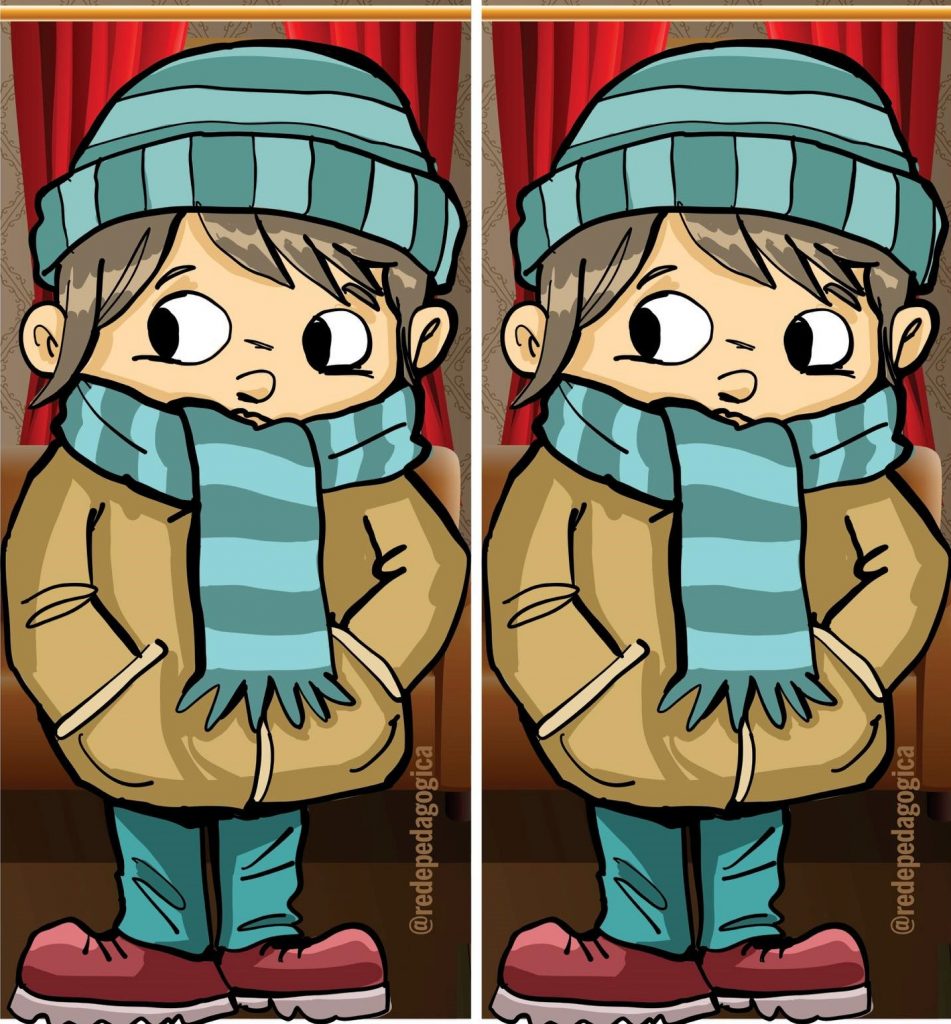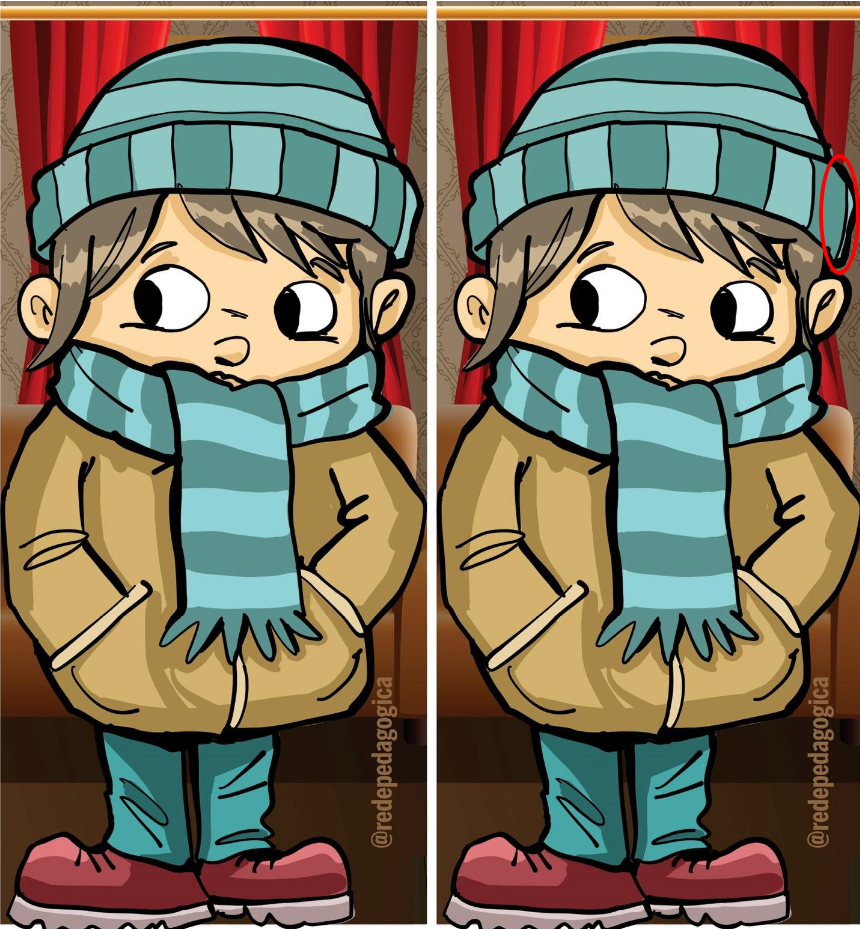Spot the Difference: A Fun and Engaging Way to Boost Cognitive Skills
We’ve all encountered “spot the difference” puzzles—those images side by side, with tiny differences hidden between them. At first glance, the two images seem identical, but the challenge is in spotting the subtle variations. These seemingly simple puzzles aren’t just fun—they also provide significant cognitive benefits. Whether you’re solving a puzzle for fun or to train your brain, these exercises help improve attention to detail, visual processing, memory, and problem-solving skills. In this article, we’ll dive into why “spot the difference” puzzles are more than just a fun pastime and how they can enhance your cognitive abilities.

What Are “Spot the Difference” Puzzles?
At their core, “spot the difference” puzzles present two similar images, with slight changes between them. The goal is to find and identify those differences. These differences can include small details like the color of an object, the position of a character, or even the presence or absence of items. Though it may seem simple, this puzzle requires deep focus, sharp observation, and patience.
For example, in the image of a child wearing a winter outfit, we notice a pair of seemingly identical pictures. However, upon a closer look, subtle differences—like the color of the hat or the placement of the scarf—become apparent. These puzzles might appear easy at first, but they engage your brain in a way that sharpens your mental skills over time.
Sharpening Attention to Detail
One of the primary cognitive benefits of solving “spot the difference” puzzles is that they enhance your attention to detail. These puzzles require you to pay close attention to every element in the images and compare each one for even the slightest differences. Over time, your brain gets trained to notice the smallest changes, a skill that can carry over into everyday life.
For instance, when solving the puzzle with the child in winter clothing, you must focus on her pose, the color of her scarf, and the surrounding background. The ability to notice these small differences can help you be more observant in other situations, whether you’re reading, analyzing data, or observing your environment.

Boosting Visual Processing Skills
Visual processing refers to how your brain interprets and makes sense of the visual stimuli it receives. “Spot the difference” puzzles are an excellent way to enhance this skill. As you compare two images, your brain has to quickly process visual information, identifying the differences between the two. This strengthens your ability to process visual data accurately and efficiently.
For example, comparing the clothing and background in the puzzle with the child involves visual processing. Your brain must quickly recognize the differences, such as the color change in the hat or the slight difference in the placement of objects in the background. Regularly practicing these puzzles helps train your brain to process visual information faster, which is useful for tasks like reading, driving, and interpreting visual data in everyday situations.
Memory and Recall Development
While “spot the difference” puzzles focus on observation, they also provide excellent mental exercise for your memory and recall. To find the differences, you need to remember the details from the first image and compare them to the second. This exercise strengthens both short-term and long-term memory as you rely on your ability to recall visual information.
For instance, in the example of the child wearing winter clothing, you must remember the details from the first image, such as the position of her arms and the exact color of her scarf. This memory recall improves your ability to remember and retain information over time, helping you with other tasks that require attention to detail and memory, such as work assignments or learning new skills.

Improving Critical Thinking and Problem Solving
“Spot the difference” puzzles are also a great way to enhance problem-solving and critical thinking skills. These puzzles aren’t just about finding the changes—they require you to think logically and strategically. You must analyze the images, break them down into smaller sections, and figure out where the differences are hiding.
For example, when solving the puzzle of the child, you might start by focusing on the larger objects, like her jacket or the background, before moving on to smaller details. This methodical approach helps you practice strategic thinking, which is useful in real-life situations, such as making decisions, analyzing complex problems, or organizing tasks.
Reducing Stress and Enhancing Mental Focus
While “spot the difference” puzzles are great for cognitive development, they also serve as an excellent stress-reliever. Engaging in these puzzles requires your full attention, which helps block out external stressors and provides a mental break from daily pressures. Focusing on finding the differences can help clear your mind and reduce anxiety, much like mindfulness exercises.
For example, in the image with the child bundled up in winter clothing, as you focus on the puzzle, you can block out distractions and worries. The process of concentrating on the task at hand offers a calming effect, helping you reset and recharge. It’s a great way to relax and refocus, especially after a busy or stressful day.

Building Patience and Perseverance
Another important benefit of “spot the difference” puzzles is that they teach patience and perseverance. Some of the differences are hard to spot, and it can take time to find them. As you work through these puzzles, you learn to be patient and persist even when the solution isn’t immediately obvious. This perseverance is an essential life skill that can help you tackle challenges and keep going, even when the task seems difficult.
Whether you’re dealing with a long-term project or facing obstacles in personal or professional life, the patience and perseverance you develop through solving puzzles will serve you well. These puzzles encourage you to slow down, focus, and stay determined until you find all the differences.
Fostering Creativity
“Spot the difference” puzzles can also foster creativity. As you compare the two images, your brain starts to imagine how the differences could have been made and what changes could have been implemented. This encourages creative thinking and helps you approach problems from different angles.
In the case of the image with the child, as you compare the two pictures, your mind may wander, imagining how you could alter the scene or add new elements. This creative thinking can enhance your problem-solving skills and encourage out-of-the-box thinking in other areas of life, such as brainstorming new ideas, designing projects, or tackling creative challenges at work.

Conclusion: More Than Just Fun—A Great Cognitive Workout
“Spot the difference” puzzles are a lot more than just a fun activity—they offer a range of cognitive benefits that help improve attention to detail, visual processing, memory, critical thinking, and creativity. Additionally, they serve as a great stress-reliever and teach patience and perseverance, making them an excellent tool for mental well-being.
So, the next time you come across a “spot the difference” puzzle, don’t just think of it as a casual pastime. Take advantage of the opportunity to exercise your brain, improve your cognitive abilities, and have fun while doing it. Whether you’re solving it for relaxation or as a mental workout, these puzzles offer a simple yet effective way to keep your mind sharp and active. Ready to get started? Grab a puzzle, start spotting those differences, and enjoy the cognitive benefits!





